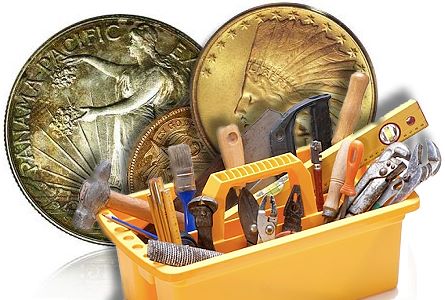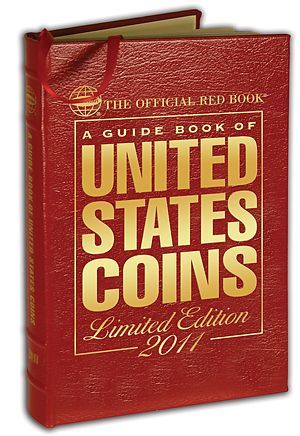By Mark Ferguson for CoinWeek – MFrarecoins.com
Okay, so you’ve decided that owning rare coins for economic and personal reasons makes sense. Now, how do you get a grip on how the rare coin market works? First of all, take an interest in rare coins. You don’t have to become an expert, just learn the basics. If you just want to put some money into coins, park them in a safe deposit box or depository, and forget them, you’ll more than likely do poorly. Consider owning bullion coins instead.
 To illustrate, the coin market of the 1970s and early 1980s was dominated by investors, during high inflation years. The coin market did very, very well and served to be a great inflation hedge. Investors were throwing money at us in the business and basically saying, “Here’s some money, buy me some coins.” When the coin market turned in 1980, there were few collectors out there buying high-end coins to support the market because prices simply rose too high. The coin market experienced a correction at that point and then struggled for years.
To illustrate, the coin market of the 1970s and early 1980s was dominated by investors, during high inflation years. The coin market did very, very well and served to be a great inflation hedge. Investors were throwing money at us in the business and basically saying, “Here’s some money, buy me some coins.” When the coin market turned in 1980, there were few collectors out there buying high-end coins to support the market because prices simply rose too high. The coin market experienced a correction at that point and then struggled for years.
After a few ups and downs, the coin market finally started firming up again, well into the 1990s, and then we had a tremendous bull market during the 2000s. What happened? The dynamics of the whole coin market changed for the better during those “formative” years, after the early 1980s boom and bust. PCGS, Professional Coin Grading Service, and NGC, Numismatic Guaranty Corporation, came into being during the mid-1980s and coins graded by those services began dominating the market. The internet became popular, which allowed people to research and learn about rare coins with little effort, and it facilitated coin trading. Then the State Quarter program began, which drew great attention to coin collecting.
Probably billions of dollars poured into the coin market during the 2000s, forcing market prices for rare coins appreciably higher. Sure, coins suffered, like everything else after the financial meltdown during the fall of 2008. Prices for high-end rare coins dropped by about 25 percent. Wealthy people recognized this as an opportunity and jumped in, and now coin prices have recovered the 2008 losses and are rising again. Recognition of premium quality coins by CAC, Certified Acceptance Corporation, and the “Plus” grading services of PCGS and NGC, has propelled the coin market much higher during the last couple of years. The common sentiment in the coin market is that this is just the beginning of another strong bull market that’s expected to last for years.
So, a collector driven market is much healthier for rare coins than an investor driven market. People who take time to learn about the coin market almost always do much better on the investment side of collecting than those people who just throw money into coins.
 To start with, in order to develop an understanding of the coin market, I recommend purchasing a copy of A Guidebook of United States Coins, published annually since 1946 by Whitman Publishing. This book is well known as the “Redbook.” Its prices are just a guide, as they’re published just once a year. It’s a place to start to get an idea of how coins are valued. But it’s the other information contained in this reference book that will really help you get started. I like the spiral bound edition. It’s easy to use.
To start with, in order to develop an understanding of the coin market, I recommend purchasing a copy of A Guidebook of United States Coins, published annually since 1946 by Whitman Publishing. This book is well known as the “Redbook.” Its prices are just a guide, as they’re published just once a year. It’s a place to start to get an idea of how coins are valued. But it’s the other information contained in this reference book that will really help you get started. I like the spiral bound edition. It’s easy to use.
By paging through the “Guidebook,” as this book is also known, you get a look at all the denominations of U.S. coinage from the beginning in 1792 to coinage currently in use, all illustrated by color photos. This will give you a good framework or familiarization with the scope of U.S. coinage. It’s a great book to acquire an overall knowledge about the coinage of the United States from the beginning to today. There are descriptions of each coin’s designs, mintage figures for each coin issue, and listings of each coin’s metal content. Basic grading criteria are also listed for each coin design.
The next tool you’ll need is a price guide that’s updated more often than annually, like the Redbook is. There are several “retail” price guides and one “wholesale” price guide that serve the coin market. Retail price guides list the prices you should expect to pay from coin dealers. There are four major retail price guides that actively update their prices on a daily basis. The PCGS and NGC grading services each have their own price guides online. Then there are two more retail price guides published by each of the major weekly coin papers: Coin Values by Coin World and Coin Market by Numismatic News. Each of these four price guides has a different method of determining market prices and their values often vary for the same coins. Consult more than one price guide.
Prices realized from the major coin auctions are often the best sources for up to date pricing, especially for high-end coins. Auction prices realized can be found on the websites of each of the major auction companies. The PCGS website also lists auction prices realized from the major coin auctions. But, use caution, because there are high-end coins and low-end coins of the same grade selling at auction. Inferior coins will sell for bargain prices, while premium quality coins for a grade will often sell for substantial price premiums. Premium quality coins are those designated by “+” grades from PCGS and NGC and green oval stickers affixed to PCGS and NGC holders by CAC.
The one wholesale price guide that all the dealers across the country use, that’s been around since 1963, is the Coin Dealer Newsletter, also known as the “Greysheet.” This guide is known for pricing coins with a “bid” and “ask” listing for each coin issue. Non-coin dealers can subscribe to this publication, as well as dealers. Prices in the Greysheet represent coins that are “solid for the grade.” Premium quality coins often trade for higher prices than listed in this dealer-to-dealer price guide. And the publisher even welcomes calls from subscribers to discuss values of specific coins.
 The last tool you’ll find helpful is a grading guide for coins. There are several. Most of them have photographs showing coin details with descriptions of their grades. They will also explain the numerical grading system used for coins, which uses the number “70” as perfection in all respects. These books include, the Official Guide to Coin Grading and Counterfeit Detection by PCGS, The Official American Numismatic Association Grading Standards for United States Coins, published by Whitman Publishing, Making the Grade, by Coin World’s Coin Values, Photograde, by James F. Ruddy, and Grading Coins by Photographs, by Q. David Bowers. There are also several other coin grading guides, in print and online.
The last tool you’ll find helpful is a grading guide for coins. There are several. Most of them have photographs showing coin details with descriptions of their grades. They will also explain the numerical grading system used for coins, which uses the number “70” as perfection in all respects. These books include, the Official Guide to Coin Grading and Counterfeit Detection by PCGS, The Official American Numismatic Association Grading Standards for United States Coins, published by Whitman Publishing, Making the Grade, by Coin World’s Coin Values, Photograde, by James F. Ruddy, and Grading Coins by Photographs, by Q. David Bowers. There are also several other coin grading guides, in print and online.
So, the basic tools you’ll need in order to develop an understanding of how the coin market works are the Redbook, a price guide, and a grading guide. Again, you don’t have to become an expert, especially at coin grading, but you’ll do yourself a big favor by learning these basics of the coin market. “Buy the book before the coin,” has been said often in numismatics. You’ll also find that it’s a good idea to team up with a coin dealer who you believe in.
 Mark Ferguson was a coin grader for PCGS , a market analyst for Coin Values and has been a coin dealer for more than 40 years. He has written for the ANA, Coin Dealer Newsletter, Coin World, Numismatic News, , Coin Values, The Numismatist and currently has a weekly column on CoinWeek. Mark can be reached at Mark Ferguson Rare Coins ( www.mfrarecoins.com)
Mark Ferguson was a coin grader for PCGS , a market analyst for Coin Values and has been a coin dealer for more than 40 years. He has written for the ANA, Coin Dealer Newsletter, Coin World, Numismatic News, , Coin Values, The Numismatist and currently has a weekly column on CoinWeek. Mark can be reached at Mark Ferguson Rare Coins ( www.mfrarecoins.com)




